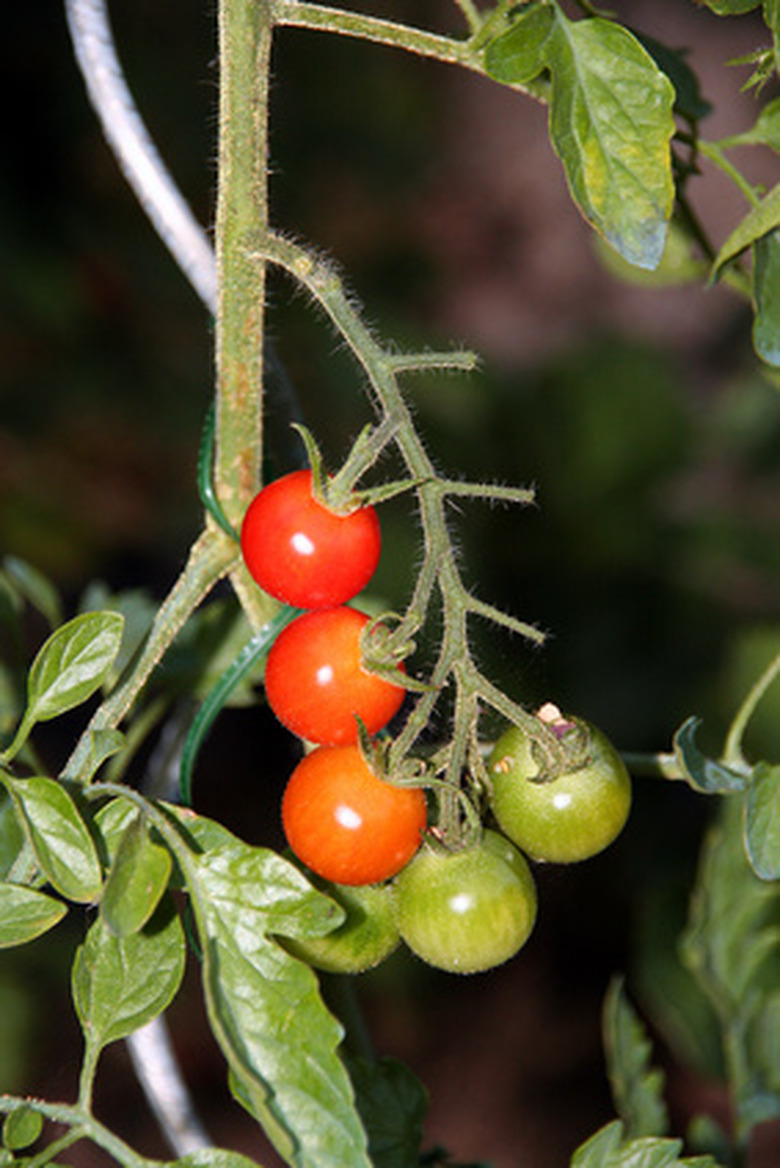What Are The Causes Of Spindly Tomato Plants?
Ripe, juicy, homegrown tomatoes are one of the highlights of the summer. Healthy and robust tomato plants produce the heaviest fruits, but a weak plant will struggle to set fruit and be more vulnerable to pest, weather and disease damage. There are several causes of spindly tomato plants, and most are easily remedied.
Lack of Light
Tomatoes need at least 6 hours of direct sunlight daily. Lack of sufficient sunlight is the most common cause of leggy tomato plant growth and poor fruit set. When planning your garden, choose a location that receives adequate sunlight, taking future tree and shrub growth into consideration. When arranging the plants in your garden, place lower-growing, determinate bush-type tomato plants or unstaked indeterminate tomatoes at the southern end and taller crops to the north. This technique will prevent tall crops like corn from shading smaller plants.
- Ripe, juicy, homegrown tomatoes are one of the highlights of the summer.
- Healthy and robust tomato plants produce the heaviest fruits, but a weak plant will struggle to set fruit and be more vulnerable to pest, weather and disease damage.
Nutrient Deficiency
Nitrogen, phosphorus and calcium are critical to tomato plant growth. Lack of nitrogen can cause poor foliage growth and weakened stems. Leaves are pale and the plant grows slowly. Phosphorus deficiency can cause leaves to curl and drop, leaving sections of the plant denuded of foliage. Without adequate calcium, tomato plants will die back from the top then begin to lose leaves. Nutrient and mineral deficiencies can be corrected with supplemental fertilizers and specific nutrients. A soil test, available from nurseries and hardware stores, can help determine what, if any, nutrients your soil is lacking.
- Nitrogen, phosphorus and calcium are critical to tomato plant growth.
Temperature
Tomatoes grow best when temperatures remain above 55 degrees and night and below 90 degrees during the day. Prolonged cold temperatures can stunt the growth of tomato plants, reduce pollination and result in a spindly, fragile plant. As temperatures warm, the plant may recover, but cold damage may retard fruit set, reducing the amount of fruit.
Weather
Tomatoes require deep, regular watering for optimum growth. Inadequate watering during drought conditions can cause leaves to wither and drop. As the leaves fall from the plant, the plant will appear leggy and fruits will be vulnerable to sun damage. Wind can defoliate a tomato plant as well, especially in coastal areas where salt may increase the damage.
- Tomatoes grow best when temperatures remain above 55 degrees and night and below 90 degrees during the day.
- Prolonged cold temperatures can stunt the growth of tomato plants, reduce pollination and result in a spindly, fragile plant.
